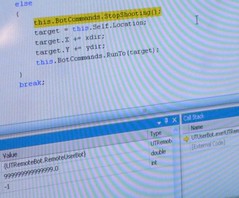Enterprise Library and the Config File
The enterprise library needs to have configuration settings defined in the config file or the machine config of the application you've built
Some usefull things i found during my exploration of .NET with emphasis on 2005 features where possible!
Exception management and Upgrading from the old "microsoft application
block" to the new "enterprise library"
Generics - What i think it is "Shopping Cart Sample"
namespace SampleShoppingApplication
{
---[Serializable]
---public class ShoppingCart
---{
------private List<item> _items = new List<item>();
------public Collection<item> Items {
---------get { return new Collection<item>(_items); }
------}
------public float TotalCost {
---------get {
------------float sum = 0F;
------------foreach (Item i in _items) sum += i.Cost;
------------return sum;
---------}
------}
---}
---[Serializable]
---public class Item {
------private string _description;
------private float _cost;
------public Item() : this("", 0F) { }
------public Item(string description, float cost) {
---------_description = description;
---------_cost = cost;
------}
------public string Description {
---------get { return _description; }
---------set { _description = value; }
------}
------public float Cost {
---------get { return _cost; }
---------set { _cost = value; }
------}
---}
}
Releasing COM components
Consume COM components in .NET
